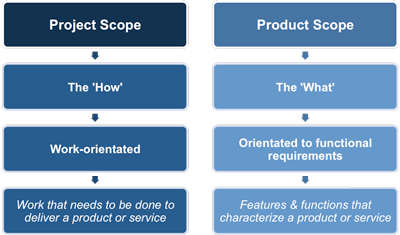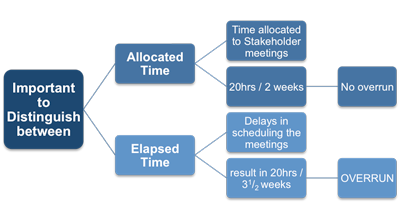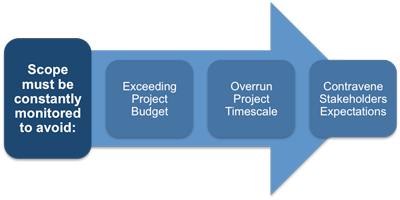Managing the Project Scope
There is a well-known saying that states that: 'Projects don't fail at the end, they fail at the beginning'. There is a lot of truth in this and whilst failure may not appear obvious until the final stages of a project, the post-implementation review often finds that there were known issues with the project which could and should have been addressed at much earlier point.
These issues often turn out to be to do with the 'scope' of the project. The word 'scope' has two distinct uses in project management. Project scope refers to 'the work that needs to be accomplished to deliver a product, service, or result with the specified features and functions' and product scope refers to the 'features and functions that characterize a product, service, or result'. Project scope is more work-oriented, (the 'how',) while product scope is more oriented toward functional requirements. (the 'what').
 |
In both instances 'defining scope' is an exercise in fact finding, documenting and gaining agreement about what needs to be done and how. This can be a time consuming process and those project team members involved in the scoping exercise can find it frustrating because stakeholders whose input is needed may not always be available for meetings and often assign these things a lower priority than their own day-to-day work. This is quite understandable because many of them will not be part of the project team and they are unlikely to have had sufficient time allocated in their already busy schedules for this additional work.
 |
To fully appreciate this problem you need to be aware of the distinction between 'allocated time' and 'elapsed time'. Even if sufficient time has been allocated for meetings with stakeholders and they are able to find this time in their schedules, there may be delays in 'when' these meetings happen. These delays tend to accumulate so that instead of having 20 hours of meetings over two weeks, you end up with 20 hours of meetings over three and a half weeks. In this example, the allocated time has not been exceeded but the elapsed time has overrun significantly.
 |
This can lead to a situation where the project appears to be slipping almost from the very beginning because project team members cannot get sufficient face time with stakeholders outside of the project or cannot get these people into the same meeting where a consensus about what is required could be worked out.
There is also the problem of how to occupy project team members during this elapsed time. A common response to this situation is to gloss over the importance of the scoping exercise based on the feeling that:
'Everybody seems to pretty much agree, and we really do need to get on and produce some deliverables'.
This scenario is more common than most books on project management would admit and represents the biggest single problem with the scoping aspect of the project - very seldom is enough time allowed for it to be done properly.
Differences in perception of what was meant when the client specified the project deliverables can lead to vastly different understandings of what exactly is required. Not only must the scope be agreed up front, it needs to be constantly monitored throughout the project to avoid it changing in a way that will break the budget or timescale, or will contravene stakeholder's expectations of the final deliverable. This is usually referred to as 'scope creep'.
 |
You will need to define those things that are out of scope as well as those things that are within the scope of the project because it cannot be taken for granted that everyone involved understands where the scope of the project ends unless they are specifically told that information.
Most experienced project managers would agree that the scope of the project needs to be decided on and documented before any real work begins. However, in the real world this ideal is often compromised because insufficient elapsed time has been allocated for it.
Remember, the principal challenge of project management is to accomplish the project goals and objectives while respecting the constraints of scope, time and cost. One of the most effective ways of balancing these constraints is by developing clear and comprehensive scope statement.
You may also be interested in:
Project Scope Management | Scope Creep and Project Change Control | Planning How to Manage the Project Scope | Documenting the Project Requirements | Creating a Project Scope Statement | Creating the Work Breakdown Structure | Validating and Controlling Project Scope.
|
|


